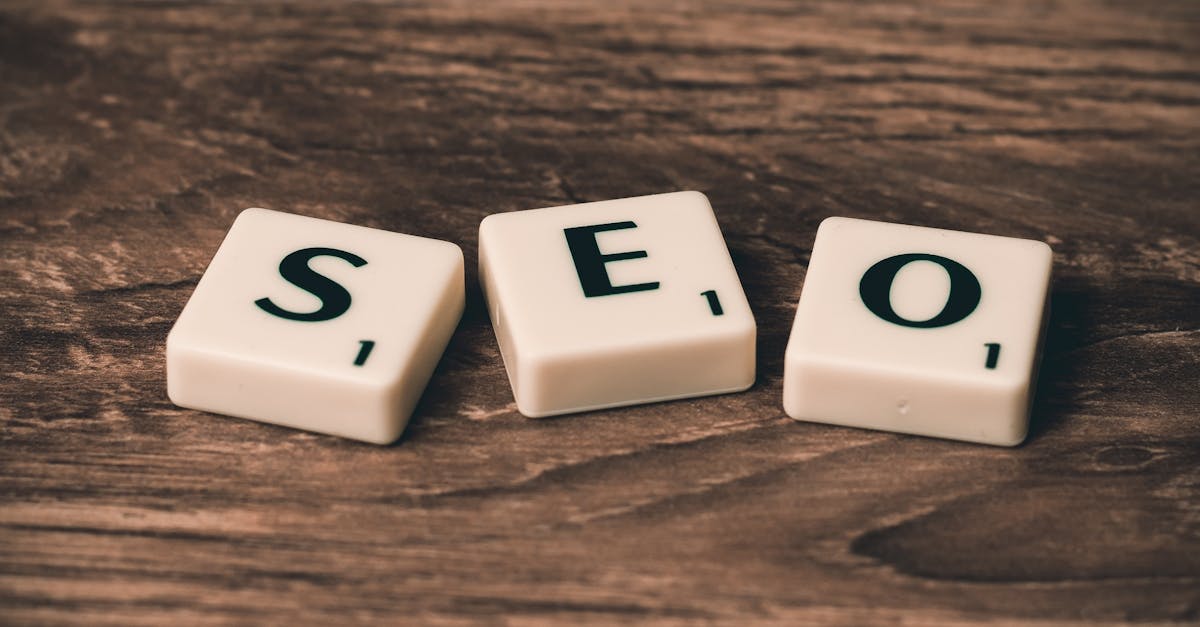
Table Of Contents
Bid Strategies in PPC Advertising
Bid strategies play a crucial role in shaping the performance of Pay-Per-Click (PPC) Advertising campaigns. Advertisers have the option to choose between various bidding methods, each with its advantages. Manual bidding allows for precise control over bids for individual keywords or ad placements. This strategy can be beneficial for those who understand their market and can respond quickly to performance data. It empowers advertisers to adjust their bids based on real-time insights, optimising the return on investment.
On the other hand, automated bidding leverages algorithms to set bids based on specific goals like maximising conversions or achieving a desired cost per acquisition. This method can save time and effort, as the system adjusts bids dynamically according to competition and performance metrics. Many advertisers find that automated strategies can enhance efficiency, especially in highly competitive markets where constant monitoring can be overwhelming. Evaluating the right bid strategy is essential for achieving optimal results in Pay-Per-Click (PPC) Advertising.
Manual vs Automated Bidding
In Pay-Per-Click (PPC) Advertising, manual bidding allows advertisers to have complete control over the bids for their keywords. This approach involves setting maximum bid amounts based on individual keyword performance and desired outcomes. Advertisers can adjust bids dynamically in response to real-time data, making it a flexible option. However, managing multiple bids manually can be time-consuming and may require constant monitoring to optimise results effectively.
Automated bidding, on the other hand, utilises algorithms to manage bids based on various factors such as competition, budget, and performance metrics. This strategy aims to maximise results within a predefined budget, often leading to improved efficiency. While it reduces the hands-on involvement from advertisers, it relies heavily on the accuracy of the algorithms, which may not always align with specific campaign goals. The choice between manual and automated bidding largely depends on the advertiser's experience and the complexity of the campaigns being run.
The Impact of Competition on CPC
The cost per click (CPC) in Pay-Per-Click (PPC) Advertising is heavily influenced by the level of competition within the chosen market. In a highly competitive landscape, advertisers often bid higher to secure visibility on search engine results pages. This competitive bidding can drive up CPC values, making it essential for marketers to carefully evaluate their competition and adjust their strategies accordingly. The more advertisers vying for a specific keyword, the more challenging it can become to maintain a cost-effective campaign.
Understanding market dynamics is crucial for optimising PPC efforts. When trends fluctuate or new entrants emerge in a market, CPC can shift significantly. Advertisers need to stay attuned to these changes to make informed decisions about their bidding strategies and budget allocations. Monitoring competitors' movements and adapting to these dynamics can help minimise costs while maximising the effectiveness of Pay-Per-Click (PPC) Advertising campaigns.
Understanding Market Dynamics
Market dynamics play a crucial role in shaping the cost per click in Pay-Per-Click (PPC) Advertising. Factors such as demand and supply directly influence the pricing of clicks. When competition increases for specific keywords, advertisers often bid higher to secure their position on search engine results pages. This heightened competition can lead to an escalation in CPC, making it essential for advertisers to monitor market trends and adjust their strategies accordingly.
Understanding the nuances of market dynamics also involves recognising the audience's behaviour and preferences. Seasonal trends, economic conditions, and emerging industry trends can all impact how potential customers interact with ads. Advertisers must stay informed and adaptable, using insights from market dynamics to refine their PPC strategies and optimise their return on investment. This ongoing evaluation allows businesses to align their campaigns with current market conditions, ensuring they remain competitive in a constantly shifting landscape.
Using CPC for Budgeting and Planning
When it comes to budgeting for Pay-Per-Click (PPC) Advertising, understanding your cost per click (CPC) is essential. Businesses must assess their financial capabilities and campaign goals to create a realistic budget. Establishing a clear spending limit helps manage expectations and encourages better decision-making regarding ad placements and bidding strategies. By analysing historical data on CPC, businesses gain insights into spending patterns, which can inform future campaigns and allow for more effective allocation of resources.
Planning around CPC can also optimise overall marketing strategies. By determining the average cost of acquiring a new customer through PPC, organisations can set reasonable performance targets. This offers a clearer picture of how much they should invest in various ad channels to achieve desired returns. Understanding the relationship between CPC and conversion rates enables marketers to adjust their tactics, ensuring they focus on the most profitable keywords and audience segments.
Setting Realistic Goals for PPC
Setting realistic goals for Pay-Per-Click (PPC) Advertising is essential for any successful campaign. It begins with a clear understanding of what the campaign aims to achieve. Goals can range from increasing brand awareness to generating leads or driving sales. Outlining specific, measurable objectives allows marketers to evaluate the effectiveness of their strategies. This clarity helps in aligning the PPC efforts with broader business goals, ensuring that every click contributes to the overall success.
When defining goals, it is important to consider the budget and expected return on investment. Setting overly ambitious targets can lead to disappointment and misallocation of resources. Instead, focus on incremental improvements based on past performance and industry benchmarks. By setting achievable milestones, businesses can monitor progress effectively and make necessary adjustments. This approach not only fosters a more sustainable PPC strategy but also optimises capital allocation throughout the campaign.
FAQS
What does cost per click (CPC) mean in PPC advertising?
Cost per click (CPC) refers to the amount an advertiser pays each time a user clicks on their ad in a pay-per-click (PPC) advertising campaign. It is a key metric used to measure the effectiveness and cost-efficiency of advertising.
How do bid strategies affect CPC in PPC?
Bid strategies determine how much an advertiser is willing to pay per click and can impact CPC significantly. Different strategies, such as manual bidding or automated bidding, allow advertisers to manage their budget and optimise their ad placements based on various performance metrics.
What is the difference between manual and automated bidding in PPC?
Manual bidding allows advertisers to set their own maximum CPC for each keyword or ad group, giving them full control over their budget. Automated bidding, on the other hand, uses algorithms to adjust bids automatically based on performance and goals, potentially improving efficiency and results.
How does competition influence CPC rates?
Competition plays a significant role in determining CPC rates. In highly competitive markets, advertisers may need to bid higher to secure top ad placements, leading to increased CPC. Conversely, in less competitive niches, CPC may be lower, allowing advertisers to achieve better cost efficiency.
How can I use CPC for budgeting and planning in my PPC campaigns?
CPC can be used for budgeting by estimating the number of clicks you aim to achieve and multiplying it by your average CPC. This helps in setting realistic budgets for your PPC campaigns and allows you to plan effectively to meet your advertising goals.

















































